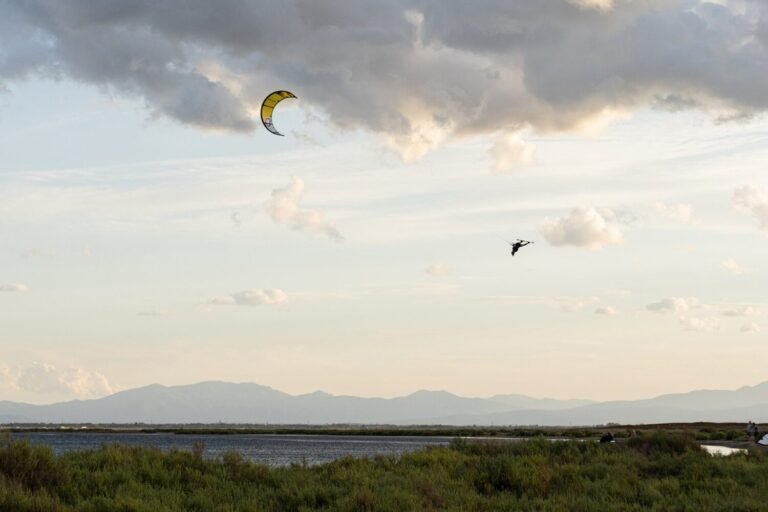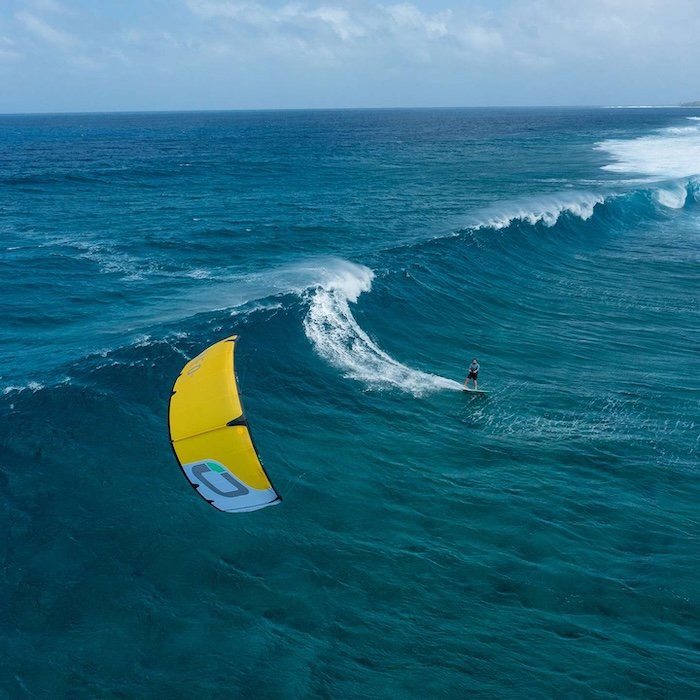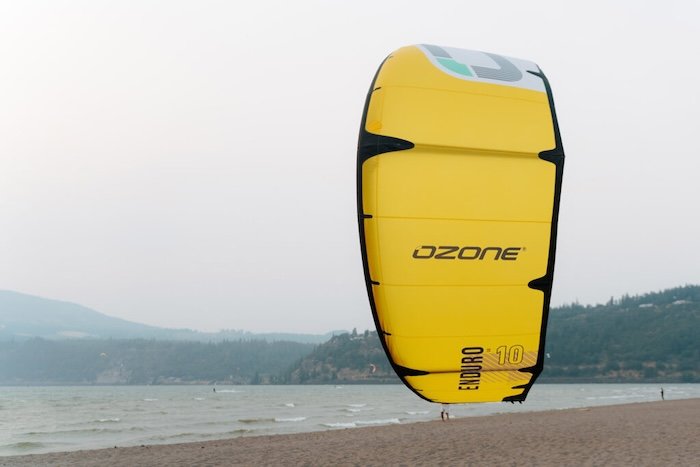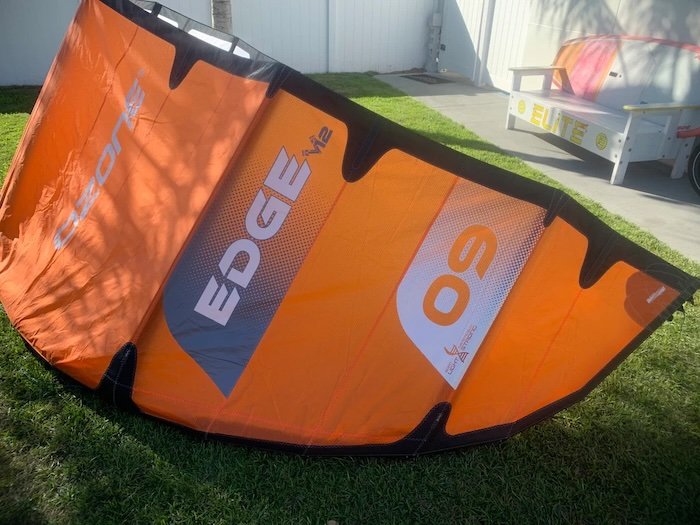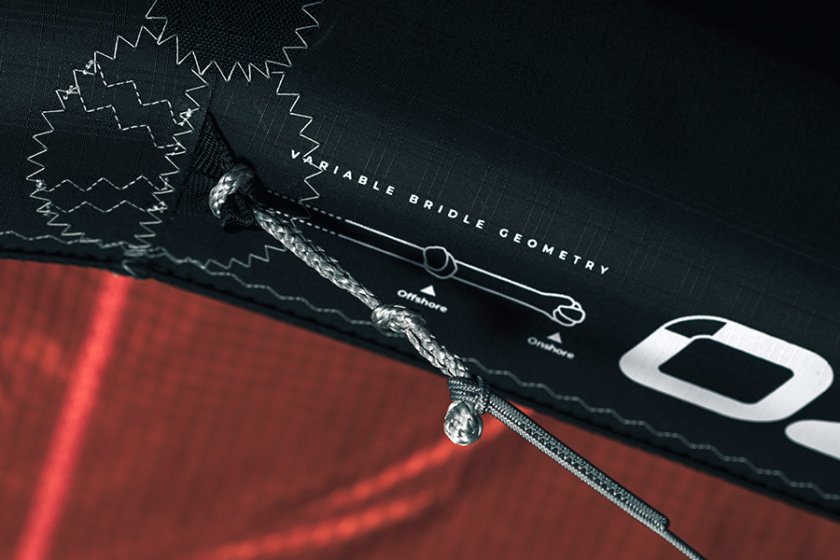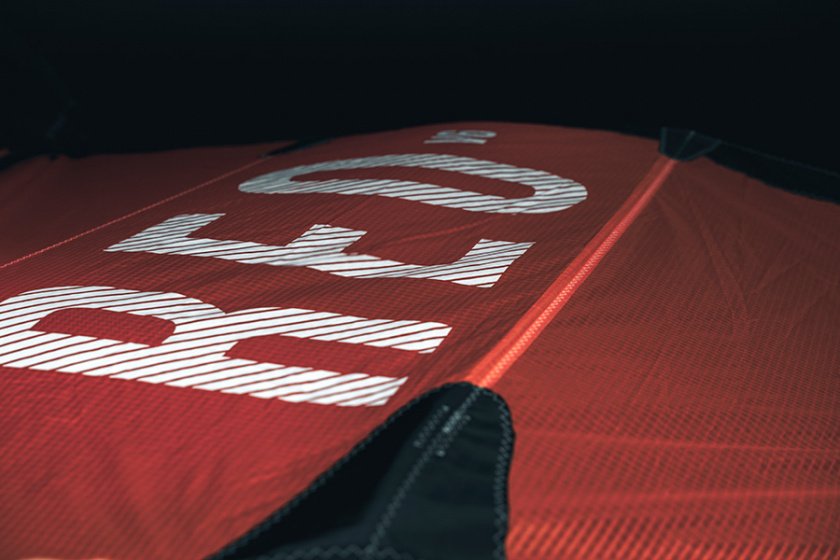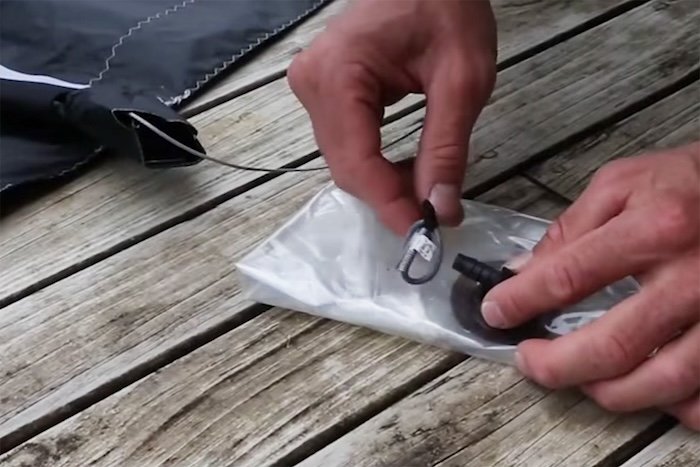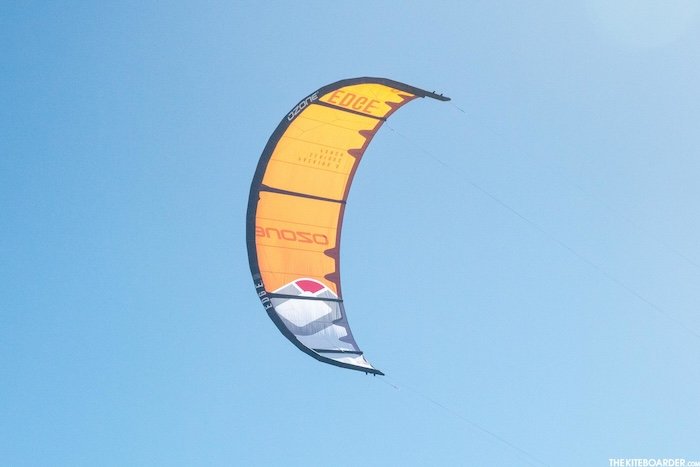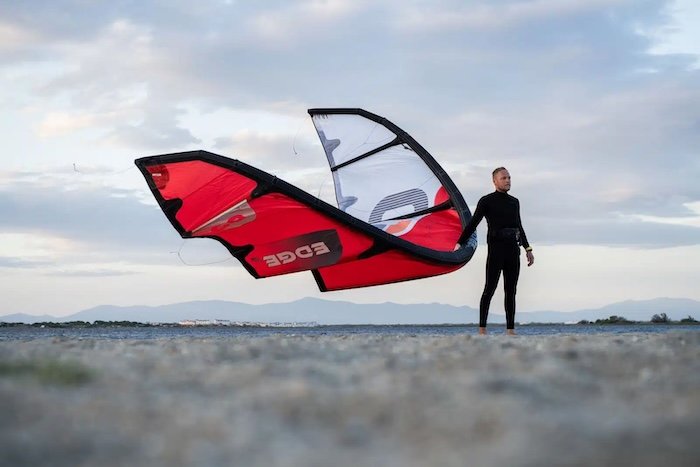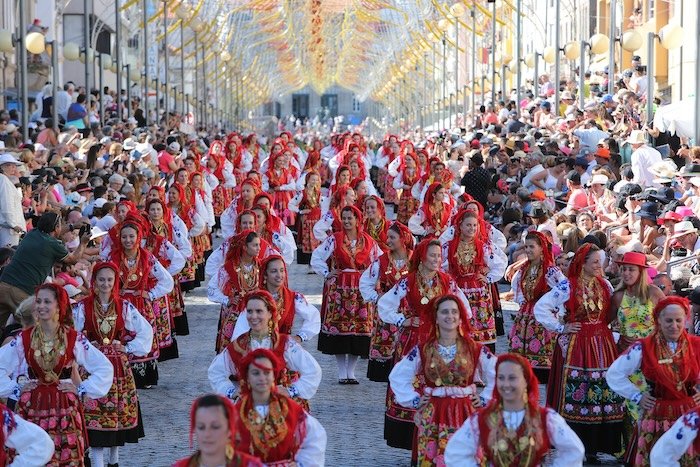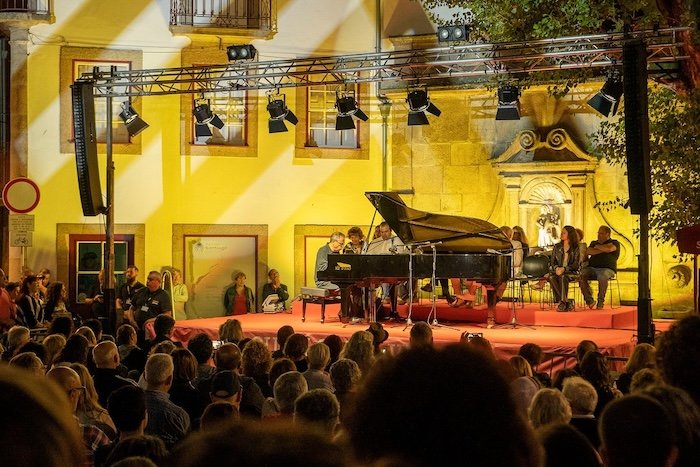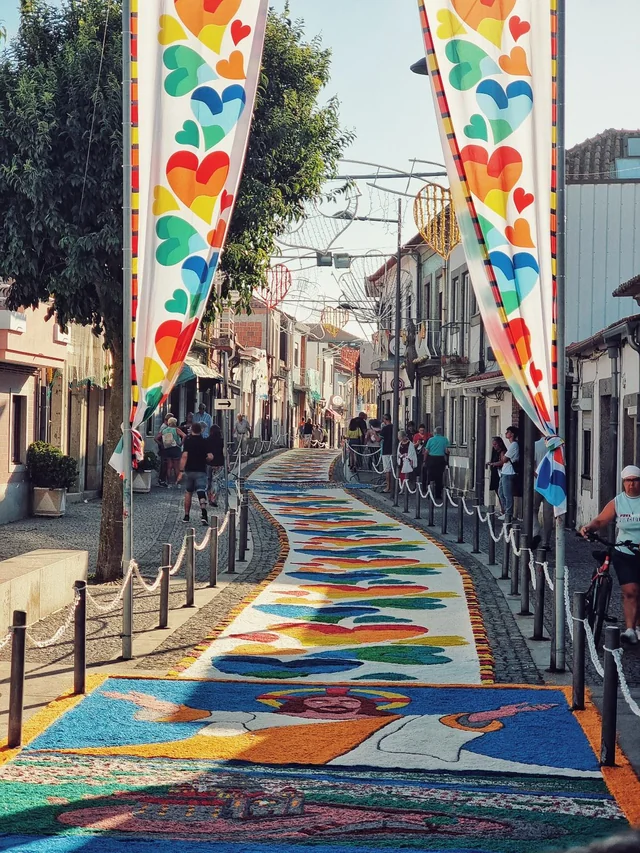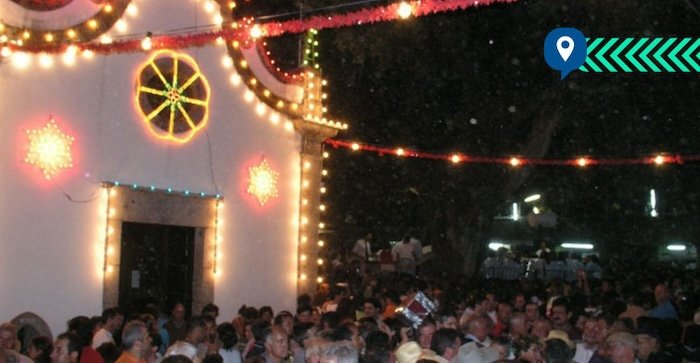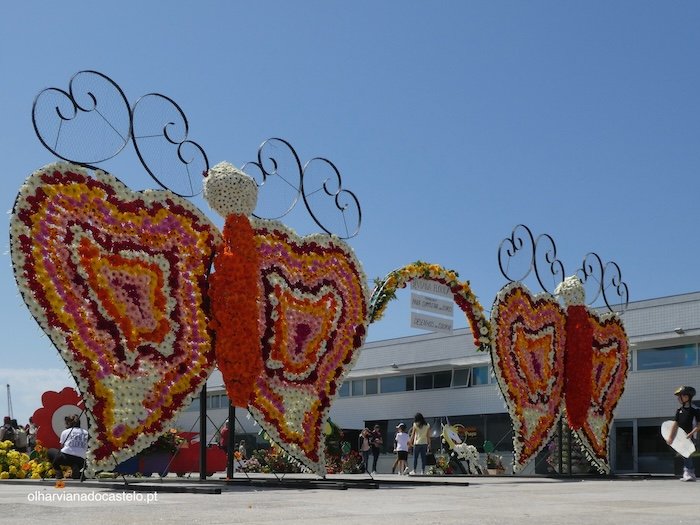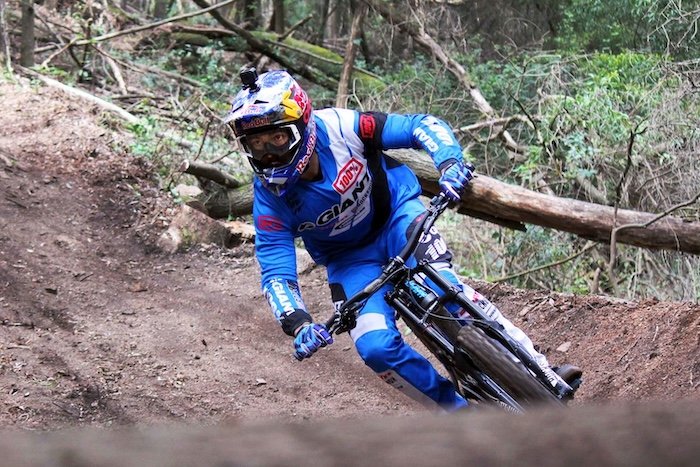LEARN KITESURFING

Learn kitesurfing… Welcome to the exhilarating world of kitesurfing group lesson! If you’ve ever dreamt of harnessing the power of the wind and gliding effortlessly over the waves, you’re in the right place.
We believe that the ocean is the ultimate playground, and with the right knowledge and techniques, you can turn it into your personal arena of adventure. Whether you’re a thrill-seeker, water enthusiast, or someone looking to try something new, kitesurfing awaits you, and we’re here to guide you every step of the way.
At KiteVoodoo are goal is to guide every student to become a truly independant rider to ensure you can ride at any spot, allowing you to enjoy kitesurfing in various conditions without limit. Therefore our dedicated team of instructors brings years of experience to ensure that your learning curve is fast & smooth, and the experience is not only educational but also a lot of fun.
10 MOST COMMON QUESTIONS
1. IS IT HARD TO LEARN KITESURFING ?
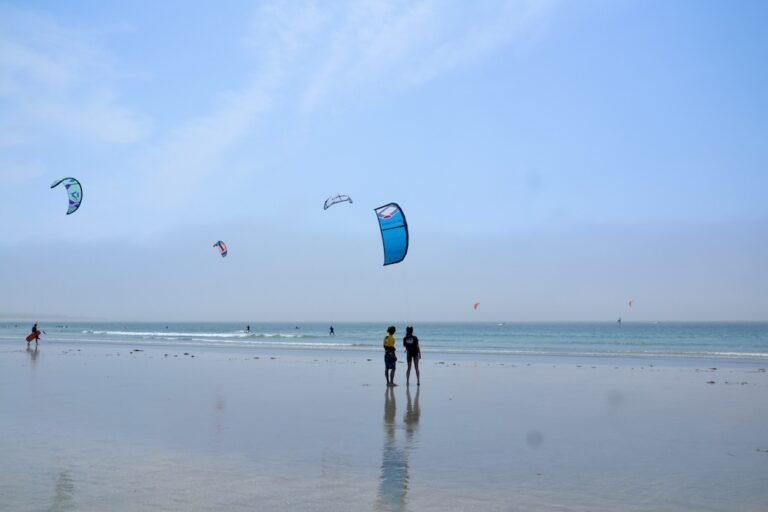
Learning kitesurfing can vary in difficulty depending on several factors, including individual aptitude, fitness level, and the quality of instruction during the lessons. While it is considered an exhilarating and rewarding water sport, it does come with a learning curve. Here are some factors to consider:
Skills Required: Kitesurfing involves a combination of skills from various water and wind sports, such as kite control, board riding, and understanding wind conditions. If you already have experience in related sports like windsurfing or wakeboarding, you may find the transition smoother.
Physical Fitness: Kitesurfing requires a reasonable level of physical fitness. Strength, endurance, and core stability are beneficial for controlling the kite and maintaining balance on the board. Regular exercise and strength training can help prepare your body for the physical demands of the sport.
Quality of Instruction: Having a skilled and experienced instructor can significantly impact the learning process. A good instructor will guide you through the basics, help you understand safety measures, and provide valuable tips to accelerate your progress.
Patience and Persistence: Like any skill-based sport, kitesurfing requires patience and persistence. It’s normal to face challenges and setbacks during the learning process, but the key is to stay motivated and keep practicing.
Safety Awareness: Safety is paramount in kitesurfing. Understanding the wind conditions, knowing how to use safety systems, and following proper procedures are crucial for a safe learning experience.
While some individuals may pick up kitesurfing group lesson quickly, others may take more time to feel comfortable on the water. The most important aspect is to approach it with a positive mindset, follow safety guidelines, and enjoy the learning journey. Taking lessons from certified instructors and practicing in suitable conditions will contribute to a more enjoyable and successful learning experience.
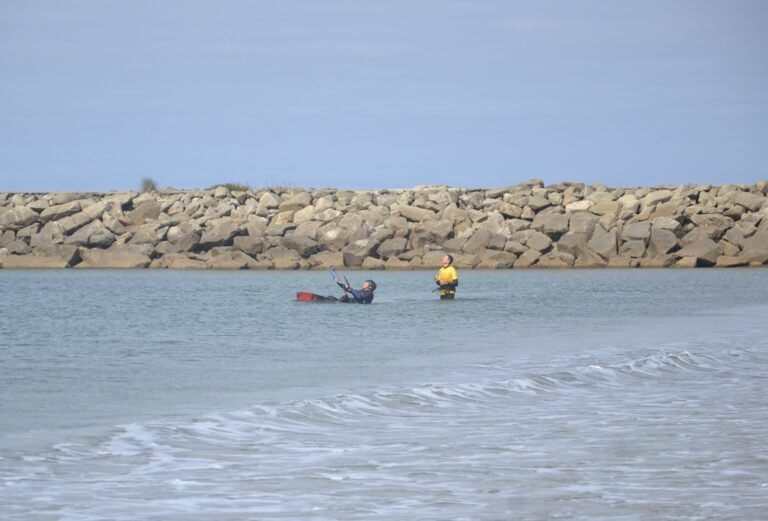
2.HOW MUCH DOES IT COST TO LEARN KITESURFING GROUP LESSON ?
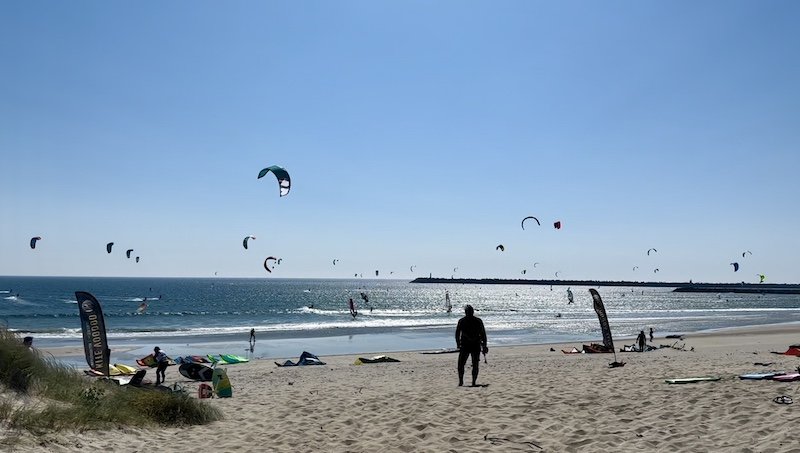
The cost of learning kitesurfing can vary based on several factors, including the location, the quality of instruction, and the duration of the lessons. Here are some cost considerations:
Lessons: Most people start by taking lessons from certified kitesurfing instructors. Prices for lessons can vary, but on average, you might expect to pay anywhere from 60€ to 150€ per hour for individual or group lessons. Many beginners opt for a package that includes multiple hours of instruction.
Equipment Rental: If you don’t have your own kitesurfing equipment, you may need to rent it. Rental costs can vary, but you might spend around €50 to €150 per day for kite and board rental.
Gear Purchase: If you decide to pursue kitesurfing regularly, you’ll likely want to invest in your own gear. The cost of kites, boards, harnesses, and other necessary equipment can range from €1,000 to €3,000 or more, depending on the brand and quality of the equipment.
Additional Costs: Factor in additional costs such as wetsuits, harnesses, safety gear, and accessories. These costs can vary, but budgeting an additional €500 to €1000 for these items is a rough estimate.
Location: The cost of learning kitesurfing may also vary based on the location. In popular kitesurfing destinations, prices might be higher due to increased demand and the availability of experienced instructors.
Keep in mind that these are general estimates, and prices can vary widely. It’s advisable to check with local kitesurfing schools and rental shops to get specific pricing for your location. Additionally, consider the value of quality instruction and safety when choosing a kitesurfing school, as investing in a reputable school can enhance your learning experience and safety on the water.
3. WHERE IS THE BEST PLACE TO LEARN KITESURF ?
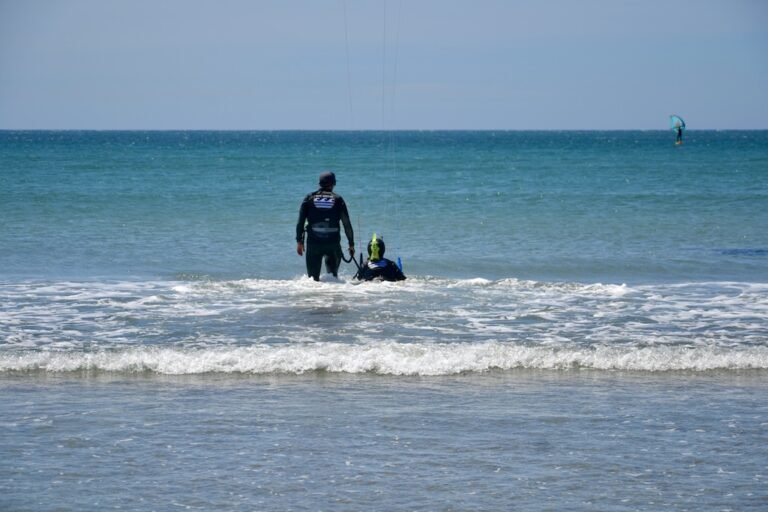
When choosing a place to learn kitesurfing, it’s crucial to prioritize professional schools with certified instructors to ensure a safe and effective learning experience. Here are some general guidelines on how to choose the best place:
Certified Instructors:
- Look for schools that employ certified kitesurfing instructors. Instructors with certifications from organizations like the International Kiteboarding Organization (IKO) or other recognized bodies have undergone training to teach kitesurfing safely.
School Reputation:
- Research the reputation of the kitesurfing school. Read reviews, testimonials, or ask for recommendations from other kitesurfers. A school with positive feedback and a good reputation is more likely to provide quality instruction.
Safety Standards:
- Check if the school adheres to strict safety standards. This includes having proper safety equipment, well-maintained gear, and clear safety protocols. A focus on safety is essential for a positive learning experience.
Lesson Packages:
- Consider schools that offer comprehensive lesson packages. These packages often include a series of lessons to take you from beginner to a more advanced level. This structured approach ensures a gradual and thorough learning process.
Location Conditions:
- Choose a school located in an area with suitable conditions for learning. Look for locations with consistent wind, shallow water, and a spacious beach area. These conditions make it easier for beginners to practice and progress.
Equipment Quality:
- Inquire about the quality of the kitesurfing equipment provided by the school. Well-maintained and up-to-date gear can contribute to a smoother learning experience.
Insurance Coverage:
- Check if the school and instructors have liability insurance. This ensures that you are covered in case of any accidents or injuries during the learning process.
Lesson Duration and Structure:
- Find out the duration and structure of the lessons. Longer lessons or multi-day courses may provide more comprehensive learning experiences. A well-structured curriculum should cover both theoretical and practical aspects of kitesurfing.
By considering these factors, you increase the likelihood of having a positive and safe learning experience with certified instructors in a professional kitesurfing school, regardless of the specific location.
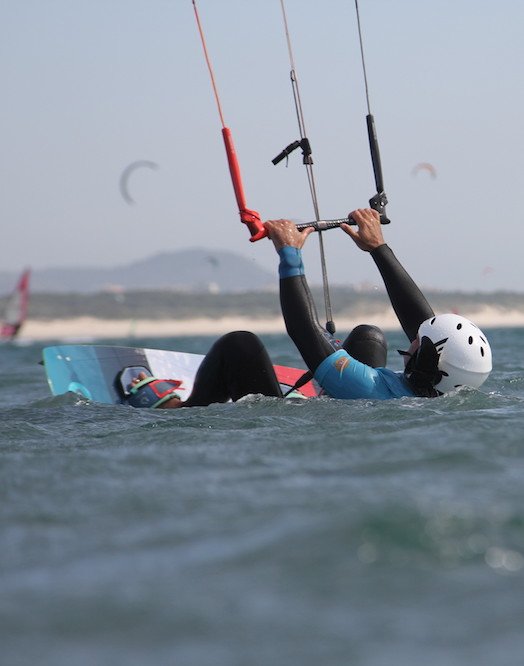
4. WHAT IS IMPORTANT TO KNOW BEFORE CHOOSING A KITE SCHOOL ?
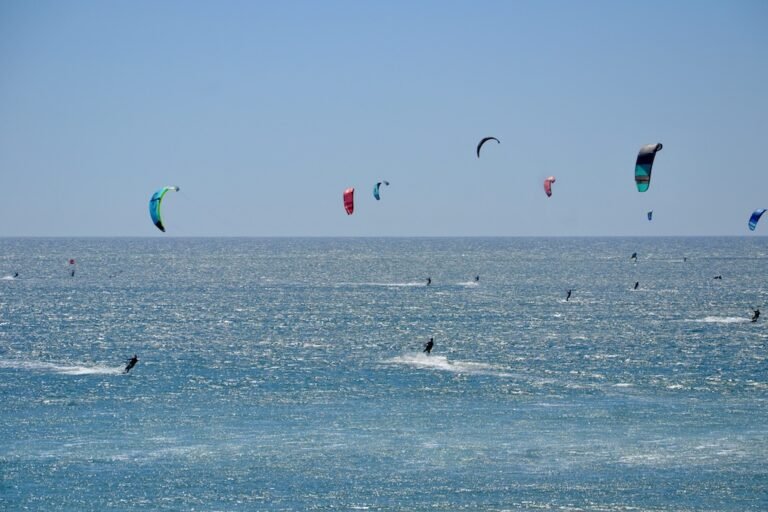
Identifying the best place to learn kitesurfing involves considering several factors, including accessibility, international flights, proximity to an airport, reliable wind conditions, good infrastructure, and the presence of professional schools. While specific locations can vary based on individual preferences, the following characteristics are generally desirable for an ideal kitesurfing learning destination:
Reliable Wind Conditions:
Opt for a region known for consistent and reliable wind conditions, as this is crucial for effective kitesurfing lessons. A destination with a reputation for steady winds is ideal for learning and practicing.
Good Infrastructure:
Consider destinations with well-established kitesurfing infrastructure, including schools, rental facilities, and accommodation options. A supportive infrastructure can enhance your overall learning experience.
Professional Schools and Instructors:
Seek out locations with reputable kitesurfing schools that employ certified and experienced instructors. A professional learning environment is essential for acquiring the necessary skills safely and efficiently.
Diverse Learning Conditions:
Look for destinations that offer a variety of learning conditions, such as shallow water areas for beginners and more challenging conditions for advancing skills. This diversity allows for a well-rounded learning experience.
Community Support:
Consider destinations with a vibrant kitesurfing community. This not only provides a supportive atmosphere but also opens up opportunities for networking, sharing experiences, and accessing local knowledge.
Safety Measures:
Prioritize locations with a strong emphasis on safety. A destination that adheres to safety standards, provides rescue services, and prioritizes student well-being is crucial for a positive learning experience.
Proximity to an Airport:
Choosing a location near an airport reduces travel time and simplifies logistics, making it easier for learners to reach their destination quickly.
By considering these factors, you can identify a destination that aligns with your preferences and offers an optimal environment for learning kitesurfing. It’s recommended to research specific locations based on these criteria to find the ideal spot for your kitesurfing journey.
5. IS KITESURFING A SAFE SPORT ?
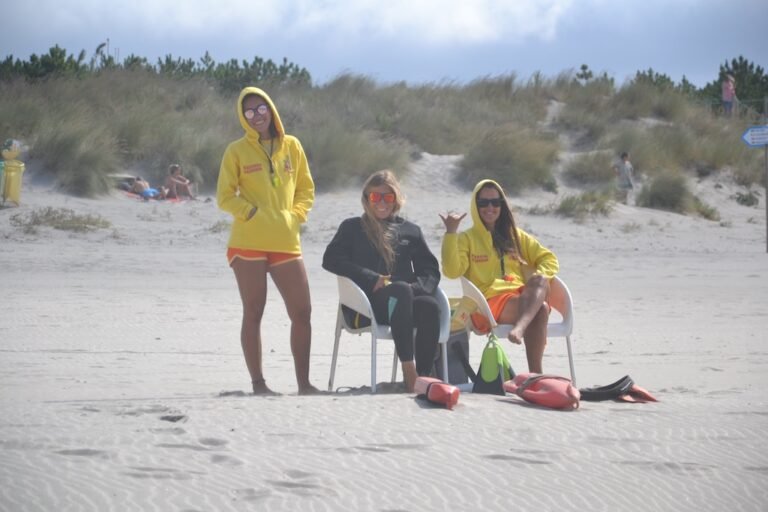
Kitesurfing can be a safe sport when practiced with proper instruction, adherence to safety guidelines, and awareness of the environment. However, like any adventure sport, there are inherent risks, and safety precautions are crucial. Here are key factors to consider regarding the safety of kitesurfing:
Professional Instruction:
- Learning from certified and experienced instructors is essential for acquiring the necessary skills and safety knowledge. Professional instruction helps beginners understand how to control the kite, handle the board, and respond to changing conditions.
Safety Gear:
- Wearing the right safety gear is crucial in kitesurfing. This includes a harness, life jacket, helmet, and sometimes protective footwear. These items provide protection and buoyancy in case of falls or accidents.
Weather Conditions:
- Being aware of and understanding weather conditions is vital. Kitesurfers should avoid extreme weather situations, such as storms or unpredictable wind patterns, as they can pose serious risks.
Location Awareness:
- Choosing suitable locations for kitesurfing is important. Beginners should practice in areas with shallow water and minimal obstacles. Avoid crowded beaches and areas with strong currents.
Responsible Kiting:
- Practicing responsible kiting involves respecting other beachgoers, water users, and wildlife. Following established rules and guidelines helps ensure the safety of everyone in the vicinity.
Emergency Procedures:
- Knowing and practicing emergency procedures is essential. This includes understanding how to activate safety systems on the kite, performing self-rescue techniques, and signaling for assistance if needed.
Continuous Learning:
- Kitesurfing skills can always be improved. Continuous learning and staying updated on safety practices contribute to ongoing safety in the sport.
Physical Fitness:
- Maintaining good physical fitness is beneficial for kitesurfers. Strength and endurance contribute to better control of the kite and board, reducing the risk of fatigue-related incidents.
While kitesurfing can be safe under the right conditions, it’s important to acknowledge the risks and take appropriate precautions. Beginners should invest time in proper training, and even experienced kitesurfers should stay vigilant and prioritize safety. Adhering to guidelines, respecting the environment, and being aware of one’s abilities and limits all contribute to a safer kitesurfing experience
6.CAN EVERYONE LEARN KITESURFING?
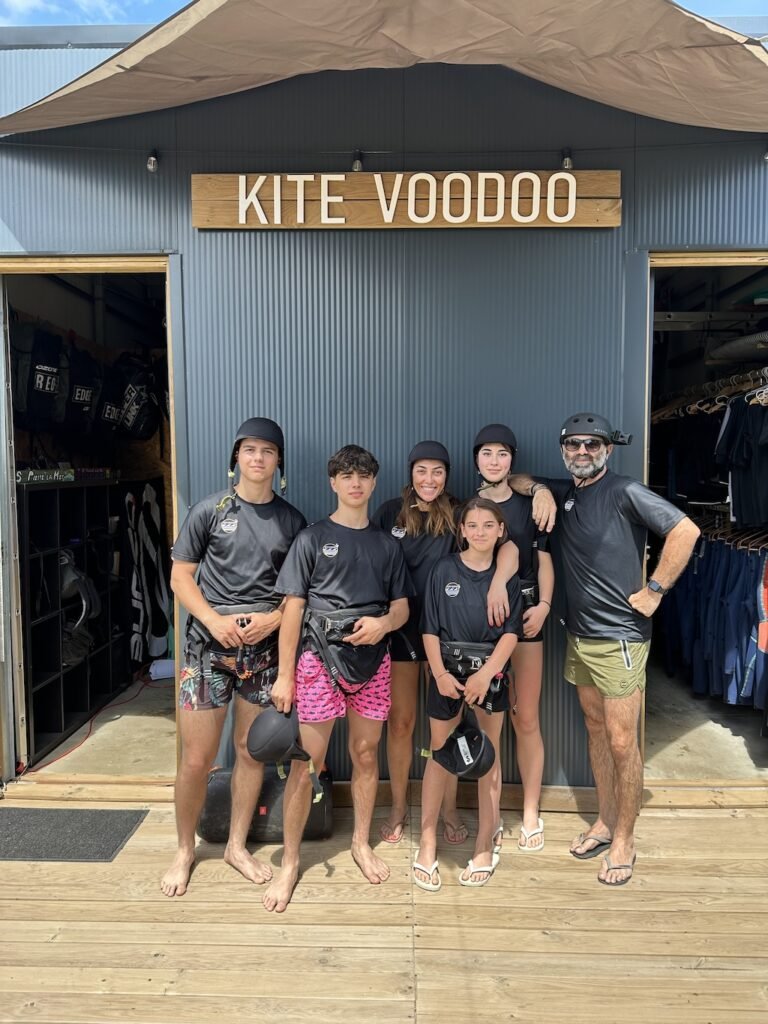
Kitesurfing is a physically demanding sport that requires a certain level of fitness, coordination, and comfort in the water. While many people can learn and enjoy kitesurfing, it may not be suitable for everyone. Here are some factors to consider:
Physical Fitness:
- Kitesurfing involves elements of strength, endurance, and balance. Individuals with a reasonable level of physical fitness are better equipped to handle the physical demands of the sport.
Comfort in the Water:
- Being comfortable in the water is essential for kitesurfing, as it often takes place in the ocean or other bodies of water. Basic swimming skills and water confidence are advantageous.
Coordination:
- Kitesurfing requires good coordination between flying the kite and maneuvering the board. Individuals with a sense of balance and coordination may find it easier to pick up the skills.
Health Considerations:
- Individuals with certain health conditions, such as heart problems or respiratory issues, should consult with a medical professional before attempting kitesurfing. Additionally, injuries or physical limitations may affect one’s ability to participate.
Age:
- While there isn’t a strict age limit for learning kitesurfing, it may be more challenging for very young children or older individuals. Some schools may have age restrictions, and it’s important to follow their guidelines.
Commitment to Learning:
- Learning kitesurfing requires time, patience, and commitment. Individuals who are willing to invest in proper training and practice are more likely to succeed and enjoy the sport.
Risk Tolerance:
- Kitesurfing involves some level of risk, as it is an adventure sport practiced in dynamic environments. Individuals should have a reasonable level of risk tolerance and be willing to follow safety guidelines.
Before starting kitesurfing, it’s advisable to take lessons from certified instructors. They can assess your abilities, provide proper training, and guide you through the learning process. If you have any health concerns or pre-existing conditions, it’s essential to consult with a medical professional before taking up kitesurfing.
Ultimately, while kitesurfing is accessible to many people, individual readiness and willingness to invest time and effort into learning play significant roles in determining one’s success in the sport.
7. AM I TO OLD TO LEARN KITESURFING?
Age is not necessarily a barrier to learning kitesurfing. Many individuals of various ages have successfully taken up the sport and enjoyed it. However, there are a few considerations to keep in mind:
Physical Fitness:
- While age alone is not a limitation, physical fitness becomes more crucial as one gets older. Kitesurfing requires a certain level of strength, endurance, and flexibility. If you are in good physical condition, you may find it easier to handle the physical demands of the sport.
Health Considerations:
- Individuals with pre-existing health conditions should consult with a medical professional before taking up kitesurfing. Certain health issues may affect your ability to participate safely.
Learning Patience:
- Learning any new sport, including kitesurfing, requires patience and commitment. If you are willing to invest time in proper training and practice, age is less of a factor.
Adaptability:
- Being open to new experiences and willing to adapt to new skills is important. Kitesurfing involves learning to control a kite, balance on a board, and navigate in the water, which may require some adjustment, regardless of age.
Proper Instruction:
- Taking lessons from certified and experienced instructors is crucial. They can tailor their teaching methods to suit your learning style and provide guidance based on your individual capabilities.
It’s not uncommon for individuals in their 40s, 50s, and beyond to take up kitesurfing successfully. The key is to approach it with a positive mindset, commit to proper training, and be aware of your physical limitations. Always follow safety guidelines, start with beginner-friendly conditions, and progress at a pace that suits your comfort level.
If you’re considering learning kitesurfing and have any concerns, it’s advisable to consult with a kitesurfing instructor and, if necessary, your healthcare provider to ensure that you can engage in the sport safely.
8. WHAT ARE THE DANGERS OF KITESURFING?
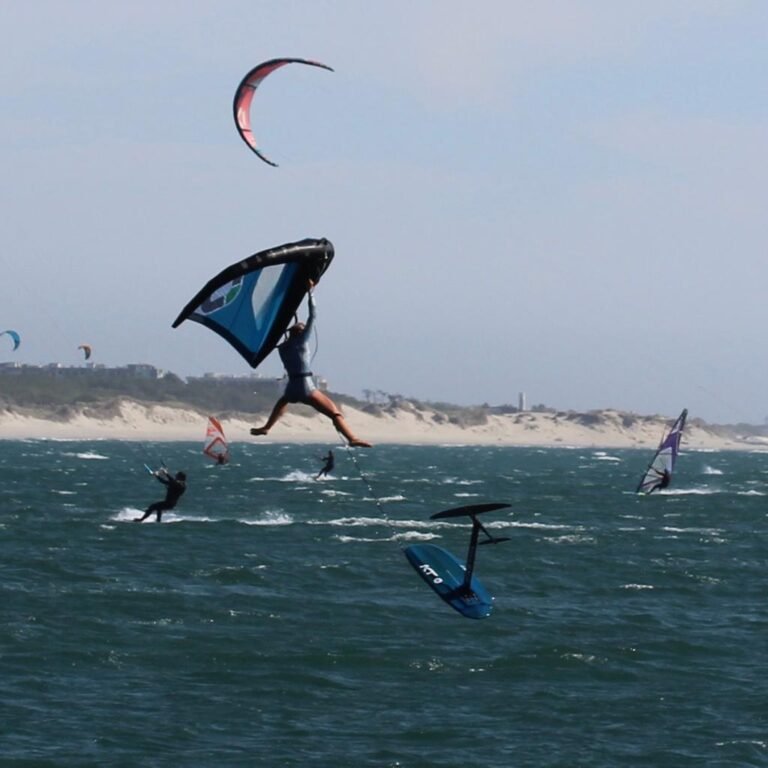
Kitesurfing, like any adventure sport, comes with inherent risks. It’s crucial for participants to be aware of these dangers and take appropriate precautions to ensure a safe experience. Here are some potential dangers associated with kitesurfing:
Uncontrolled Kite:
- One of the primary risks in kitesurfing is losing control of the kite. This can happen due to wind gusts, equipment malfunctions, or mistakes in kite handling. An uncontrolled kite can lead to accidents and injuries.
Collisions:
- Collisions with other kitesurfers, water users, or obstacles (rocks, piers, boats) pose a risk. Being aware of your surroundings and following proper right-of-way rules helps minimize the risk of collisions.
Strong Winds:
- While wind is necessary for kitesurfing, excessively strong winds can lead to difficult and dangerous conditions. Wind gusts can catch inexperienced riders off guard, potentially causing accidents.
Equipment Failure:
- Malfunctions or failure of kitesurfing equipment, such as lines, harnesses, or safety systems, can be hazardous. Regular equipment maintenance and thorough pre-session checks are essential to reduce the risk of failures.
Inadequate Training:
- Lack of proper training and instruction is a significant danger. Beginners who attempt kitesurfing without proper guidance may struggle to control the kite and board, leading to accidents.
Weather Conditions:
- Adverse weather conditions, such as storms, lightning, or unpredictable wind patterns, can pose serious risks. It’s crucial to check weather forecasts and avoid kitesurfing in unsafe conditions.
Landing on Hard Surfaces:
- Falls or being dragged onshore can result in injuries, especially if the rider lands on hard surfaces like rocks or concrete. Learning to perform controlled landings and practicing self-rescue techniques is essential.
Strap Injuries:
- Straps on the board can cause injuries if not properly adjusted. A sudden release or change in direction can lead to twisting injuries if the feet are securely strapped to the board.
Physical Fatigue:
- Kitesurfing can be physically demanding. Fatigue can compromise a rider’s ability to make sound decisions and react quickly, increasing the risk of accidents.
Ocean Hazards:
- Presence of marine life, strong currents, and unpredictable water conditions can add to the challenges. Riders should be aware of potential hazards and choose suitable locations for their skill level.
To mitigate these dangers, it’s crucial for kitesurfers to:
- Take lessons from certified instructors.
- Follow safety guidelines and rules.
- Use well-maintained equipment.
- Be aware of weather conditions.
- Progress gradually based on skill level.
- Wear appropriate safety gear.
By being mindful of these risks and adopting safe practices, kitesurfers can enjoy the sport with reduced chances of accidents or injuries.
9.CAN I TEACH MYSELF HOW TO KITESURF?
While it’s technically possible to try to teach yourself how to kitesurf, it is strongly discouraged and considered unsafe. Kitesurfing involves handling powerful equipment, understanding wind dynamics, and mastering specific techniques for both kite control and board riding. Without proper guidance, attempting to learn kitesurfing on your own can lead to serious safety risks and complications. Here are several reasons why self-teaching is not recommended:
Safety Concerns:
- Kitesurfing involves powerful kites that can generate significant pull. Without proper instruction, you may struggle to control the kite, leading to accidents, injuries, or collisions.
Risk of Uncontrolled Kite Movement:
- Lack of experience in controlling the kite can result in unpredictable movements, making it challenging to navigate safely. An uncontrolled kite can cause harm to yourself and others.
Equipment Handling:
- Properly rigging and handling kitesurfing equipment requires specific knowledge. Incorrect setup or misuse of equipment can lead to accidents, equipment damage, or failure.
Understanding Wind Conditions:
- Kitesurfing is highly dependent on wind conditions. Without proper training, you may struggle to assess wind patterns, increasing the risk of being caught in challenging situations.
Lack of Emergency Response Skills:
- Knowing how to perform self-rescue and respond to emergency situations is crucial in kitesurfing. Without proper instruction, you may not be prepared to handle unexpected challenges.
Difficulty in Board Riding:
- Learning to ride the board and navigate the water is a skill that requires guidance. Attempting to do so without proper instruction can result in frustration and limited progress.
Legal and Environmental Considerations:
- Many kitesurfing locations have specific rules and regulations. Ignoring these guidelines may not only compromise your safety but also lead to legal consequences and impact the environment.
Progression Challenges:
- Kitesurfing involves a progression from basic skills to more advanced maneuvers. Attempting to skip foundational steps can hinder your overall development as a kitesurfer.
To learn kitesurfing safely and effectively, it is highly recommended to take lessons from certified instructors at reputable kitesurfing schools. Professional instruction ensures that you acquire the necessary skills, knowledge, and safety practices to enjoy the sport with confidence. Kitesurfing schools provide a structured learning environment, hands-on experience, and guidance tailored to your skill level, significantly reducing the risks associated with self-teaching.
10. WHY IS KITESURFING SO ADDICTIVE?

Kitesurfing is often described as addictive for a variety of reasons, combining the thrill of the sport with other physical and psychological factors. Here are some reasons why kitesurfing can become highly addictive:
Adrenaline Rush:
- Kitesurfing provides an intense adrenaline rush, especially during high-speed rides, jumps, and maneuvers. The combination of wind, water, and the sensation of gliding over waves creates an exhilarating experience that many find addictive.
Sense of Freedom:
- The feeling of harnessing the power of the wind and being propelled across the water gives kitesurfers a unique sense of freedom. The ability to explore vast stretches of open water adds to the allure of the sport.
Connection with Nature:
- Kitesurfing takes place in natural environments like oceans and lakes, providing a close connection with nature. The constant interaction with the elements, such as wind and water, contributes to a profound and addictive experience.
Constant Learning Curve:
- Kitesurfing has a steep learning curve, and there’s always something new to master or improve upon. The challenge of progressing through different skill levels and learning new maneuvers keeps enthusiasts engaged and motivated.
Social Aspect:
- Kitesurfing often creates a strong sense of community. Being part of a community that shares a passion for the sport, exchanging tips, and sharing experiences can enhance the overall enjoyment and contribute to the addictive nature of kitesurfing.
Varied Conditions:
- Kitesurfing can be adapted to various conditions, from calm, flat-water locations to challenging, wave-rich environments. The ability to experience different conditions and adapt the sport to one’s preferences adds variety and excitement.
Mindfulness and Focus:
- Kitesurfing requires a high level of focus and mindfulness. The need to concentrate on kite control, board riding, and environmental factors can provide a meditative and absorbing experience, contributing to the addictive nature.
Physical Fitness and Well-Being:
- Kitesurfing is a full-body workout that engages muscles and improves cardiovascular fitness. The positive impact on physical health, combined with the satisfaction of progressing in the sport, can contribute to addiction.
Travel Opportunities:
- Kitesurfing can take enthusiasts to beautiful locations around the world. The prospect of exploring new destinations and experiencing different kiteboarding conditions adds an element of adventure that many find irresistible.
Unique Sensations:
- The unique sensation of riding on the water, being lifted into the air during jumps, and experiencing the power of the kite creates a sensory experience that is hard to replicate in other sports.
The combination of these factors makes kitesurfing a highly addictive and rewarding activity for those who embrace the sport. The constant pursuit of improvement, the thrill of the ride, and the sense of community all contribute to the magic of kitesurfing.
Click here to discover: The 10 best kitesurfing spots in Portugal.


